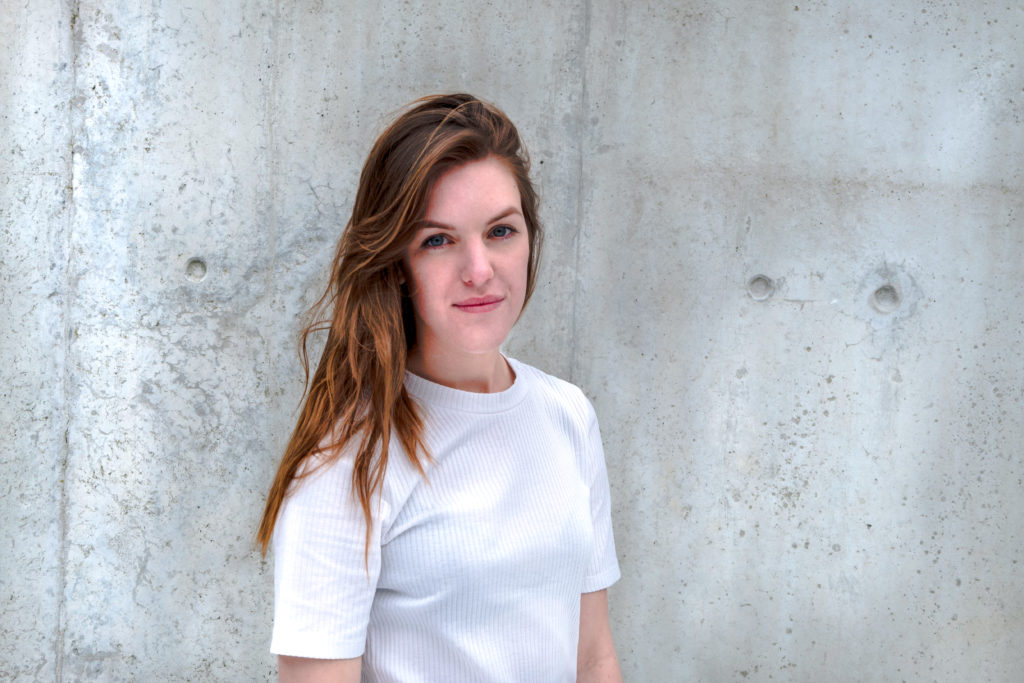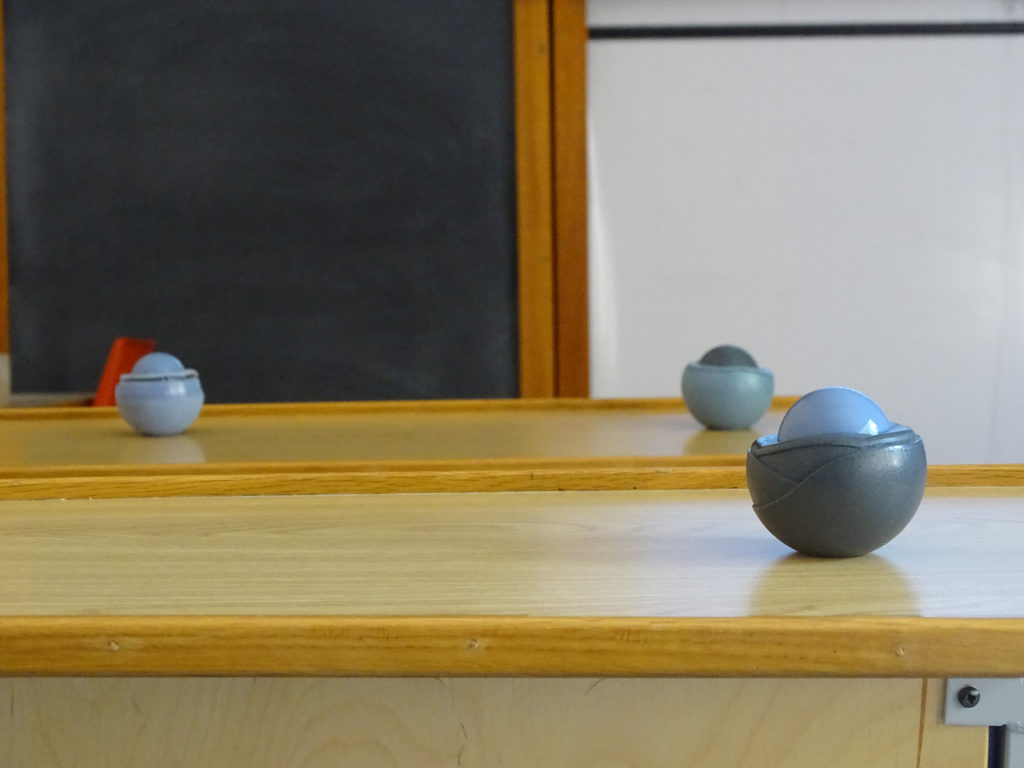Jade Gidney is a final year BSc Product Design student at the University of Sussex. For her final project she created her own learning technology to try to track student engagement, we interviewed her to find out more about her product.
Could you tell us a bit about the Design Project module?
You start the project at the end of your second year or at the end of your placement year. And you’re supposed to know a broad idea of what you want to study. Then you come into your final year and you do an unmarked presentation straightaway, presenting to all of the potential supervisors. So then in your first term, that’s when you are doing all of your research and ideation and preliminary testing, when you’re going big with your ideas and ‘what if?’ questions.
Over Christmas, which is probably for me when the project really grounded itself and started to take shape for me, that’s when you are making more models and getting into the three dimensional world as opposed to just working on paper. The next term is when you are testing your final product and making sure that it works, that it looks good. This is all building up the the Design Show which is a week long exhibition. On the Thursday of that week you have your final presentation which counts towards your dissertation. Then on the Friday it is much more relaxed and chilled and is when you actually get to celebrate the work you’ve been doing for the whole year.
And what is your project?
It is a device, Cadence, that students can fidget with during their lectures and it’s essentially a ball that rolls around an infinite amount of times. The lecturer can then see information on the number of students interacting with the device. There are a lot of studies that suggest that fidgeting is a sign that our minds are starting to wander and we’re becoming disengaged. So if a lecturer knows how many students are becoming disengaged then they can do something about it instead of just continuing their lecture with an unengaged audience.
When lecturers first heard about the project, a lot of them were just like ‘I don’t know if I want to know how many students are engaged or not’. One thing that I want to iterate is that fidgeting and disengagement is natural, it’s a natural part of human nature and that’s not a bad thing, it’s part of how we deal with things. The unnatural thing is trying to sustain focus for hours and that is something that has been happening in lectures. Lectures haven’t changed that much in the last 50 years yet technology is enhancing so many things. So this isn’t to tell lecturers that they are a bad lecturer, it’s not to tell them that they’re boring. It is basically to give them an informed decision on when they should change the pace of their lecturer, which is something that most lecturers are already doing, they’re already asking student questions and introducing group tasks, it’s just informing them of when the best time to do that is.
What were the motivations behind that project?
I did my internship in packaging design and that was really what I wanted to do when I came into my final year. So I gave my first presentation on that, the preliminary unmarked one, and the lecturers said to me ‘you’re not going to get the most out of your degree if you do this because there’s not much technical side to it’. I was still pretty determined that I wanted to do that but after hearing that I tailored it slightly and altered it and started looking into the packaging design of coffee cups. I was think about designing a new biodegradable material, something like that. Then I was looking at alternative uses for coffee cups as well as how people interact with them during their lectures and I started to notice that people would fidget with them and tear them apart. So that’s when I started looking into fidgeting in lecture halls and what that means and how it relates to engagement. So it was a very wonky route and I had to do a lot of catch up work in my first term.
Who did you collaborate with?
Quite a lot of people. Obviously this project is designed at students and lecturers so I have the student side down and I understand the mindset of students. To understand the lecturers’ side I collaborated with a number of lecturers including Dr Carlos Sato, Lecturer in Management; Dr Carole Becker, Teaching Fellow (Mathematics); Dr Kingsley Sage, Teaching Fellow in Computing Sciences; Dr Blay Whitby, Teaching Fellow in Engineering; and Dr Ronald Grau,Teaching Fellow in Computer Science and Artificial Intelligence. So those were the main people that I got information from to try to understand how they monitor student engagement already. I also sent out questionnaires to lecturers which were really useful.
As well as this I’ve been collaborating with Psychologists because I know I can do the product design side of things, but this project related a lot to attention so I’ve been working with Dr Sophie Forster, Lecturer In Psychology, who is a researcher in mind wandering and attention. I was working with her firstly to understand as much as I could about fidgeting and engagement. I’ve also had a meeting with Dr Harry Witchel, Senior Lecturer in Physiology, who is a neuroscientist to find out more about engagement. George Robinson in the Technology Enhanced Learning Office was also helpful. Obviously TEL focus on subtle ways to integrate technologies into lecture halls, so having meetings with him was really useful to understand how you can go about integrating technologies into lecture halls because it’s all very nice saying I want to put them in a lecture hall but if you don’t know how it’s going to get there then it is a bit redundant.
Jade will be graduating from the University of Sussex in July, after graduating she intends to move to New Zealand due to the number of programmes and initiatives that they offer for women in engineering.
Contact TEL
We are keen to showcase the great work of both staff and students at the University of Sussex, if you would like to share the work of your students or any innovative teaching practices please get in touch by emailing tel@sussex.ac.uk.
Canvas Training
Places are filling up fast on our Canvas Fundamentals training workshops. We strongly encourage all Sussex academic staff to sign up for a place. Attending the workshop will familiarise you with Canvas and your options for teaching with the new VLE. It also gives you access to your migrated modules from 17/18.
Professional Services staff are also welcome to book a place on this workshop.





